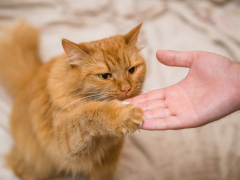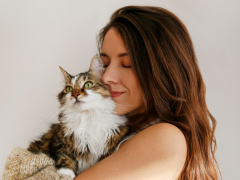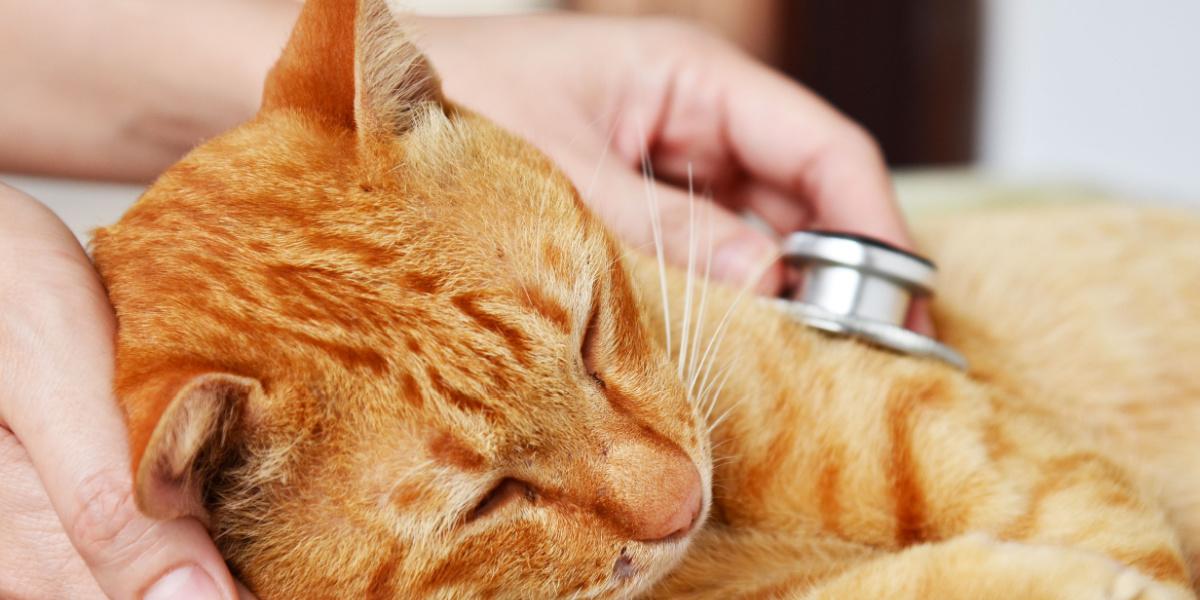
Bradycardia is a term that refers to having a slower than expected heart rate. In this article, you’ll learn about sinus bradycardia specifically, potential causes in cats, ways bradycardia is diagnosed and treated, and some frequently asked questions.
Quick Overview: Bradycardia in Cats






What Is Bradycardia In Cats?
Bradycardia is the medical term used when the heart rate is much slower than expected. Most often when talking about bradycardia, we are referring to sinus bradycardia. This means that the rhythm of the heart is a normal sinus rhythm but the rate is very slow.
Cats have very high heart rates compared to humans. Normally, a cat’s heart rate will be 160 to 200 beats per minute. The term sinus bradycardia might apply in cats when the heart rate drops below 150 beats per minute.
Severe or life-threatening bradycardia might occur when the heart rate drops down to 120 beats per minute or lower.
Also Read: What Is A Normal Heart Rate For A Cat?
Causes Of Bradycardia In Cats
In this article, we’ll be focusing on sinus bradycardia, where the heart rhythm is normal. Bradycardia might also be caused by an abnormal heart rhythm, or arrhythmia. There are many types of cardiac arrhythmias and causes for them, which are beyond the scope of this article.
For sinus bradycardia, where the rhythm is normal, there are a few different causes in cats.
Increased vagal tone: This is one of the more common causes of bradycardia in cats. The vagus nerve, one of the 12 cranial nerves in the body, is responsible for involvement with many processes, including heart rate, digestion, breathing, and reflex actions like sneezing, coughing, and vomiting.
Many diseases affecting body systems the vagus nerve is involved with will lead to high vagal tone and contribute to a lower heart rate. These can include diseases affecting the GI tract, urinary tract, respiratory tract, and neurologic disease affecting the nerve itself.
Hypothermia (low body temperature): If a cat’s body temperature gets too low, this can lead to a low heart rate. This can be seen in cats exposed to very cold outdoor temperatures, in end stage disease where the body has trouble regulating its own temperature, and during anesthesia.
Higher doses of anesthetic medications: One effect of many anesthetic drugs is a slow heart rate. Some degree of a lower heart rate is expected during anesthesia. However, in some cases the heart rate may drop lower than expected, especially with higher doses of medications.
Heart conditions: Bradycardia is rarely seen with the more common heart conditions in cats. Illness interfering with the heart’s electrical conduction, like an infection in the heart muscle (myocarditis) might lead to a slow heart rate.
Athletic conditioning: Cats that are in great shape and highly athletic might have a lower heart rate all the time normally. This cause of bradycardia typically does not cause any medical concerns.
Symptoms Of Bradycardia In Cats
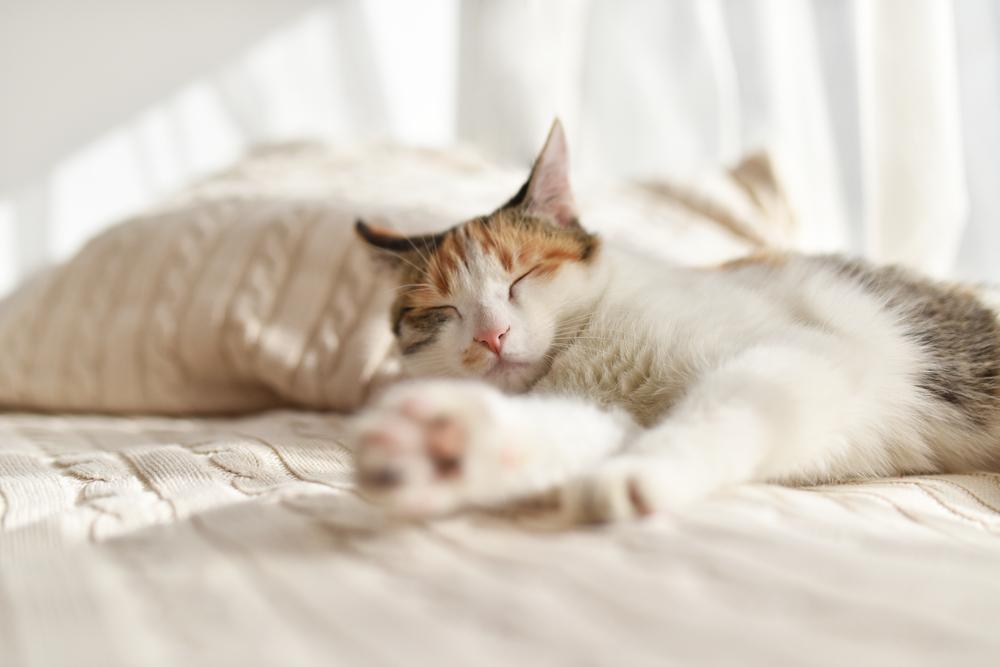
Bradycardia can make cats feel unusually tired after normal activity.
The most common signs of bradycardia in cats include:
- Exercise intolerance: Cats certainly sleep and rest a lot. But they still have quick bursts of speed and energy. Exercise intolerance usually refers to a cat that is unwilling to engage in normal play behavior or appears to tire out very easily. Heavy breathing or a need to lay down quickly might be seen.
- Weakness: A cat might be generally weak and lethargic. This might lead to reluctance to get around and do normal things like use the litter box, walk to the food bowl, or jump up to reach that favorite high spot in the living room.
- Collapse: When an animal collapses from a heart condition, this is called syncope. A syncopal episode can occur when the heart rate slows down so much that blood is not pumping effectively to the brain.
Syncopal episodes might look like a cat has fainted. A cat might fall off a high area they’ve jumped on or might simply fall over when running or walking. Syncopal episodes might sometimes be mistaken for seizures.
Most of the time, syncopal episodes are short, with the cat trying to sit up and recover within a couple of seconds.
Complications Of Bradycardia In Cats
If a cat has a long-term condition that contributes to sinus bradycardia, it is possible to see symptoms periodically. However, with successful treatment, these signs should be uncommon.
Some types of bradycardia, like a low heart rate from high athletic conditioning, can be considered normal and often does not cause complications.
However, a severe condition affecting the body that is causing bradycardia that is not treated properly with veterinary care might progress to the point that a cat might die from the complications of poor blood circulation. These types of conditions are usually emergent ones, like shock, severe infections, or severe hypothermia.
Diagnosis Of Bradycardia In Cats
Your veterinarian can diagnose bradycardia in your cat during a physical examination by listening to the heart with a stethoscope, as well as checking pulses.
If your vet is concerned about a low heart rate, they might advise checking the heart rhythm with an electrocardiogram (ECG or EKG). This allows your vet to see if there is a cardiac arrhythmia causing the bradycardia, or if the rhythm is regular and just slow, like we see with sinus bradycardia.
If sinus bradycardia is thought to be from another disease condition, your vet might advise further testing, including complete blood count, blood chemistry, urinalysis, x-rays, or ultrasound.
Your vet might check blood pressure as well, which is also important for assessing heart function and proper blood perfusion in the body.
If a common cause for bradycardia is not found, or if your cat’s bradycardia is being caused by an abnormal heart rhythm, your vet might advise that you see a board-certified veterinary cardiologist who specializes in heart disease. Echocardiography, or an ultrasound of the heart, can be used to look for other heart function concerns.
Treatments For Bradycardia In Cats
In cases of high athletic conditioning, no treatment is typically needed. A vet might still wish to rule out any other causes of bradycardia and determine that no other underlying issues are present.
Veterinarians can administer some medications that increase heart rate if appropriate, such as atropine, especially in an emergency situation.
Most cases of bradycardia are secondary to another disease process occurring, so treatment will depend on determining the underlying cause. Treating the underlying cause might then help the heart rate to come back up to normal.
For example, if a cat’s heart rate is too low because of hypothermia, techniques will be used to warm the pet and get their body temperature back to normal. By bringing the body temperature back to normal, the heart rate should return to normal as well.
During anesthesia, pets are closely monitored by trained staff every couple of minutes to ensure everything is going as expected. If bradycardia occurs, your vet can quickly assess the heart rate and rhythm on the ECG monitor and advise adjusting the anesthetic drug levels or having medication administered to increase heart rate.
Also Read: Cat Body Temperature: Causes & Treatment of Abnormal Body Temperature
Cat Care Tips
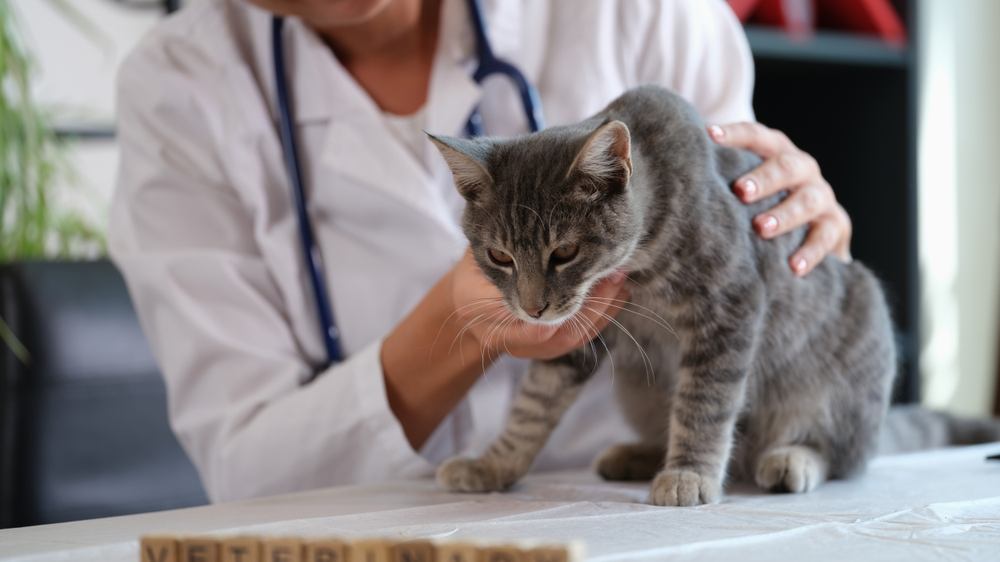
Symptoms of bradycardia are serious and warrant an urgent visit to the veterinarian.
Because most cat parents do not have a need to check their cat’s heart rate routinely, it might not be obvious that a cat has bradycardia. Be vigilant for signs of weakness or collapse and have your cat brought to your vet as soon as possible if concerns arise.
Bradycardia is usually not seen with mild illness, but if illness is allowed to get worse, severe disease can affect the whole body. If your cat develops illness with the GI tract, respiratory tract, etc., make sure to have them evaluated as soon as possible so it doesn’t get worse.
Prevention Of Bradycardia In Cats
Bradycardia may not always be preventable, but here are two tips to help with prevention for some causes.
Hypothermia: If your cat goes outdoors, always be aware of weather conditions and temperatures. It’s best to keep your cat indoors if temperatures will get close to or below freezing. Always make sure your outdoor cat has an easy and accessible way to get inside when needed.
If your cat is elderly or has an end-stage disease condition, provide warm, comfortable spaces for them that can help them keep their body temperature better regulated.
High vagal tone: This cause most often happens with disease occurring in other places of the body. Even if a condition seems minor, it’s better to have it evaluated in case it develops into something more severe that might have greater negative effects on the body, like a low heart rate.
Final Thoughts
Bradycardia in cats is a term for when a cat has a heart rate much lower than expected. Sinus bradycardia, where the low heart rate is still accompanied by a normal rhythm, is the most common type of bradycardia. Regular health checkups with your veterinarian and having illnesses evaluated early can be the best ways to treat and prevent sinus bradycardia successfully.
Frequently Asked Questions
What causes bradycardia in a cat?
There are a few types of bradycardia. The most common is sinus bradycardia. Common causes for sinus bradycardia include hypothermia (low body temperature), deeper levels of anesthesia, athletic conditioning, and anything impacting the vagus nerve.
The vagus nerve is involved with many body systems, including the GI tract, respiratory tract, and urinary tract. Diseases affecting these systems might cause what is called high vagal tone, and lead to bradycardia if the disease is prolonged or severe.
Other causes of bradycardia are usually related to arrhythmias (abnormal heart rate). Common causes include urinary obstruction and underlying heart disease affecting electrical conduction through the heart.
How is bradycardia usually treated?
Sinus bradycardia is treated depending on the underlying cause. Treating that cause primarily will usually lead to the heart rate increasing to normal again.
Examples include warming up a cat that is hypothermic, or addressing an underlying GI tract, urinary, or respiratory disease that is leading to high vagal tone.
During anesthesia, sinus bradycardia is addressed by adjusting the anesthetic medication being used or by using a medication that increases heart rate.
What is a slow heart rate for a senior cat?
All cats will have a similar range for a normal heart rate, regardless of age. This range is typically from 160 to 200 beats per minute. A heart rate that is less than 150 in a cat might be concerning for bradycardia.
What is life-threatening bradycardia?
Heart rates that are around 120 beats per minute or less are concerning for a severe or potentially life-threatening condition in a cat.
This may be the case with severe shock, an end-stage illness, hypothermia, or in a cat with a prolonged urinary obstruction, among others.
-
Abnormal Heart Rhythm in Cats: Sinus Bradycardia in Cats. PetMD. February 12, 2010. Accessed July 13, 2023.
https://www.petmd.com/cat/conditions/cardiovascular/c_ct_abnormal_heart_rhythm
-
Biddinger, B. (2008). "Heart failure and scary arrhythmias (Proceedings)." DVM360. https://www.dvm360.com/view/heart-failure-and-scary-arrhythmias-proceedings
-
Kittleson, M.D. (2023). "Heart Disease: Conduction Abnormalities in Dogs and Cats." Merck Veterinary Manual. https://www.merckvetmanual.com/circulatory-system/heart-disease-conduction-abnormalities-in-dogs-and-cats/heart-disease-conduction-abnormalities-in-dogs-and-cats
-
Seladi-Schulman, J. (2023). What is the Vagus Nerve? Healthline. https://www.healthline.com/human-body-maps/vagus-nerve






